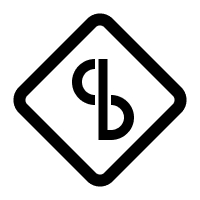One Job



Charity Majors wrote a post that is a timeless piece of advice for all engineers titled Know your “One Job" and do it first.
There is an underlying message in the post of alignment - in particular determining alignment between what you are passionate about and the primary responsibility your manager holds you accountable too.
This premise is easily transferable beyond the individual level, but to ensuring success for teams within an organization. For any given team, we can try a simple task:
- In isolation the team (or team manager) writes down in no more than 50 words what they understand their primary business value is and what metric they are measured by
- The director or VP one or more levels above the team performs the same task as (1)
- Each of the two parties exchange what they wrote
- Discuss differences of opinion that may be discovered
If there are no differences of opinion - congratulations. But, if there are differences - that is ok, and the value in the exercise is the discussion that stems from those differences; to understand each others perspective and to build alignment on common ground anywhere on the spectrum between the viewpoints.
A team that is not delivering on the outcomes that are expected of them are at risk. It is critical for you to understand clearly what that expectation is.
Expectation changes through reorganizations
To put color to the task and highlight how misalignment could evolve over time - we could take a hypothetical Web Performance team at a company that builds software to help people make websites.
At the simplest level, we could ask ourselves:
(1) Is the Web Performance team responsible for the Core Web Vitals for the resulting websites produced by the system (2) Is the Web Performance team responsible for platform tooling and libraries that teams can choose to leverage to improve the Core Web Vitals in their product areas and detecting regressions
Each of these have very different measurements of success; in addition to differing cascading expectations across the company for product team expectations.
If choosing (1):
- How does that evolve over time?
- What say do the Web Performance team have over product owners to reverse path on features that cause regressions to a metric they own? What specific touchpoints in the resulting experience are in scope?
- Just the homepage?
- How about the cart?
- How about the checkout which is owned by yet a different group?
If choosing (2):
- What level of prioritization is performance oriented work given at each product owning level?
- How does leadership channel accountability if Core Web Vitals are not competitive amongst peers?
- How do the Web Performance team and their leadership measure their impact? Penetration of tooling integrations, aggregate Core Web Vitals scores, something else?
This is just one hypothetical, but it is easy to extrapolate these differences of viewpoints and gaining alignment across many shapes of team and organization.